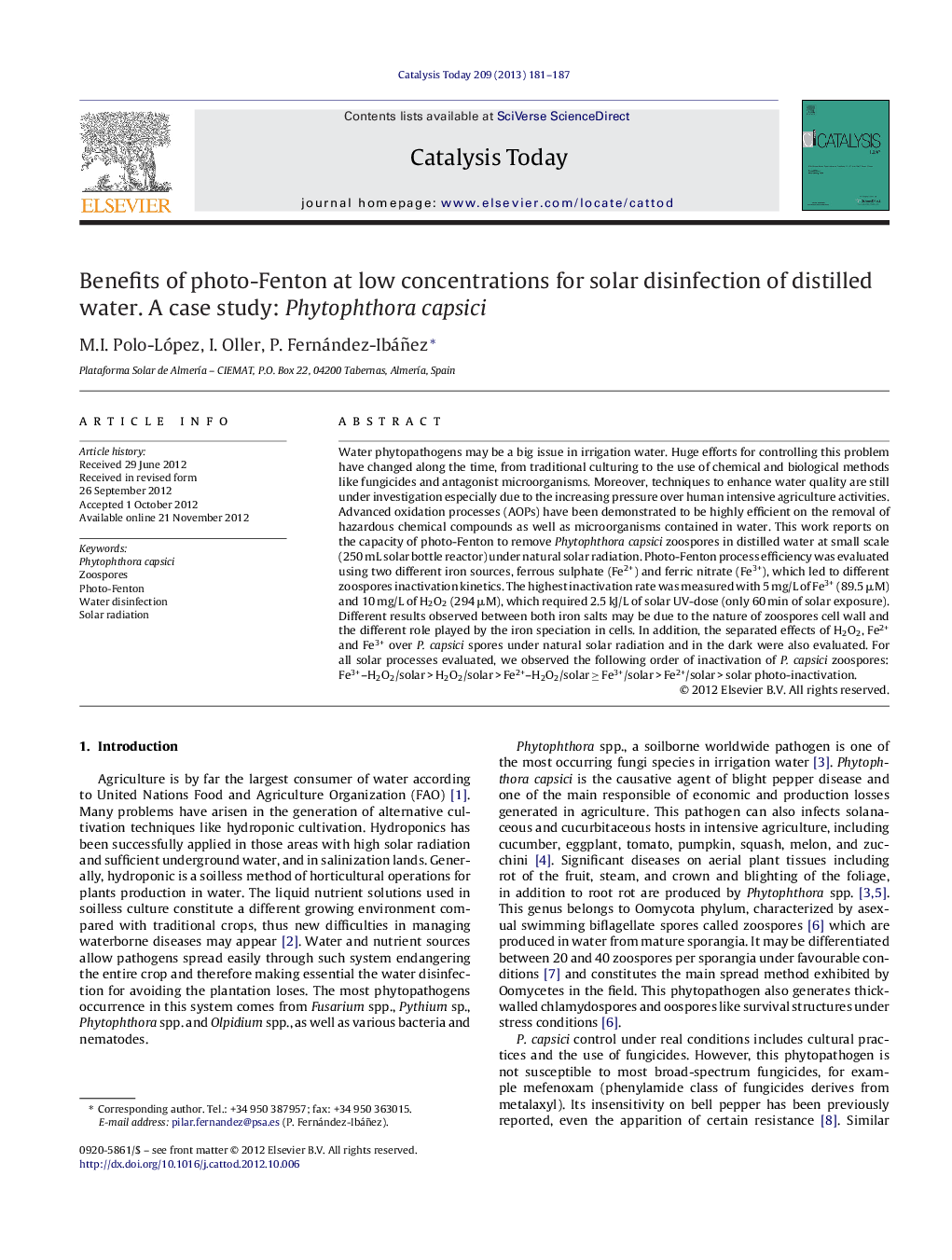| کد مقاله | کد نشریه | سال انتشار | مقاله انگلیسی | نسخه تمام متن |
|---|---|---|---|---|
| 55046 | 47038 | 2013 | 7 صفحه PDF | دانلود رایگان |

Water phytopathogens may be a big issue in irrigation water. Huge efforts for controlling this problem have changed along the time, from traditional culturing to the use of chemical and biological methods like fungicides and antagonist microorganisms. Moreover, techniques to enhance water quality are still under investigation especially due to the increasing pressure over human intensive agriculture activities. Advanced oxidation processes (AOPs) have been demonstrated to be highly efficient on the removal of hazardous chemical compounds as well as microorganisms contained in water. This work reports on the capacity of photo-Fenton to remove Phytophthora capsici zoospores in distilled water at small scale (250 mL solar bottle reactor) under natural solar radiation. Photo-Fenton process efficiency was evaluated using two different iron sources, ferrous sulphate (Fe2+) and ferric nitrate (Fe3+), which led to different zoospores inactivation kinetics. The highest inactivation rate was measured with 5 mg/L of Fe3+ (89.5 μM) and 10 mg/L of H2O2 (294 μM), which required 2.5 kJ/L of solar UV-dose (only 60 min of solar exposure). Different results observed between both iron salts may be due to the nature of zoospores cell wall and the different role played by the iron speciation in cells. In addition, the separated effects of H2O2, Fe2+ and Fe3+ over P. capsici spores under natural solar radiation and in the dark were also evaluated. For all solar processes evaluated, we observed the following order of inactivation of P. capsici zoospores: Fe3+–H2O2/solar > H2O2/solar > Fe2+–H2O2/solar ≥ Fe3+/solar > Fe2+/solar > solar photo-inactivation.
Figure optionsDownload high-quality image (115 K)Download as PowerPoint slideHighlight
► First demonstration of the effectiveness of several solar AOPs to inactivate Phytophthora capsici zoospores in water.
► Evaluation of the efficacy of sunlight with H2O2, Fe2+, Fe3+, Fe2+/H2O2, Fe3+/H2O2.
► Important zoospores’ viability loses (3-log) for all solar treatments within 1–3 h of exposure.
► Solar/Fe3+ (ferric nitrate) was much more efficient than solar/Fe2+ (ferrous sulfate).
Journal: Catalysis Today - Volume 209, 15 June 2013, Pages 181–187